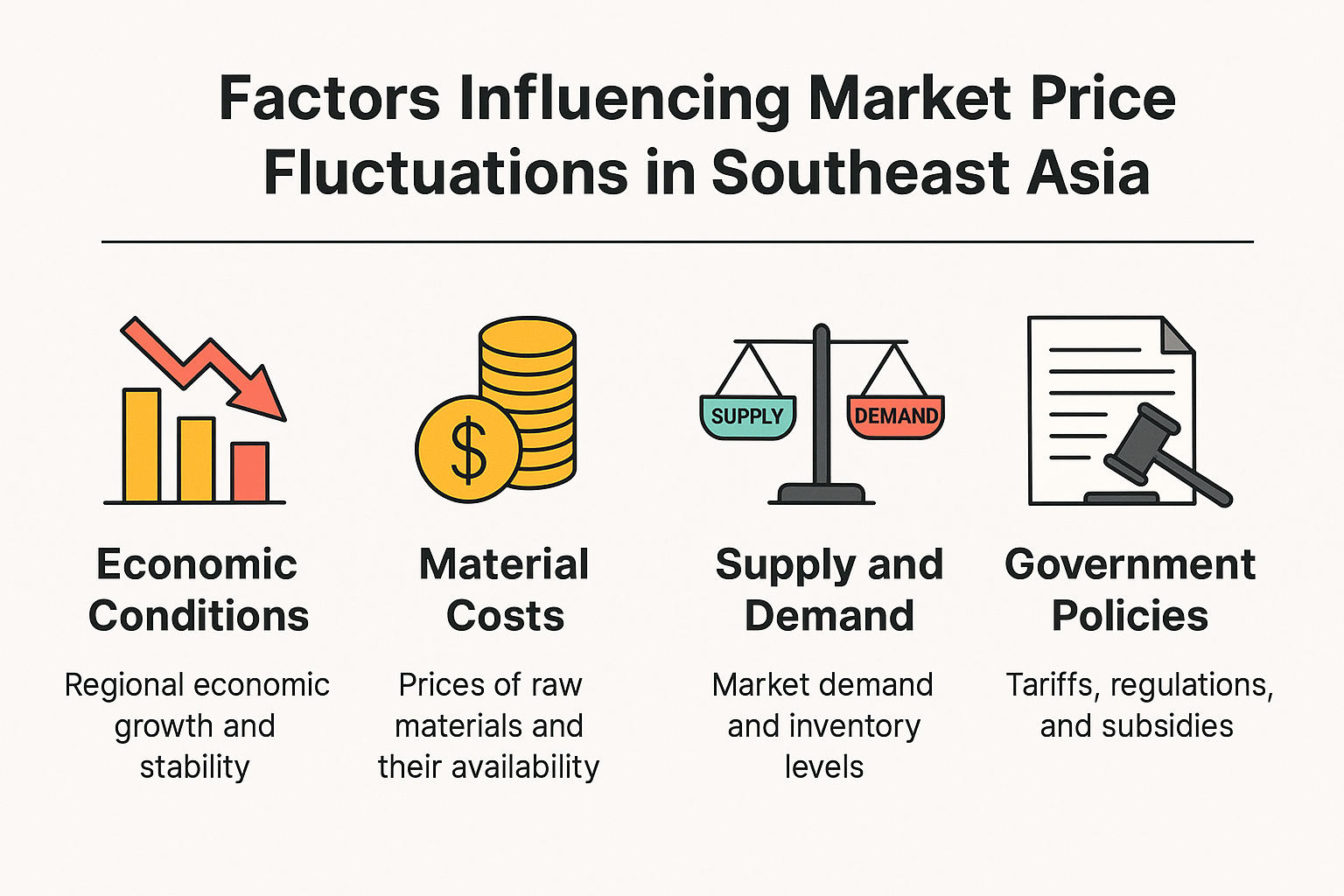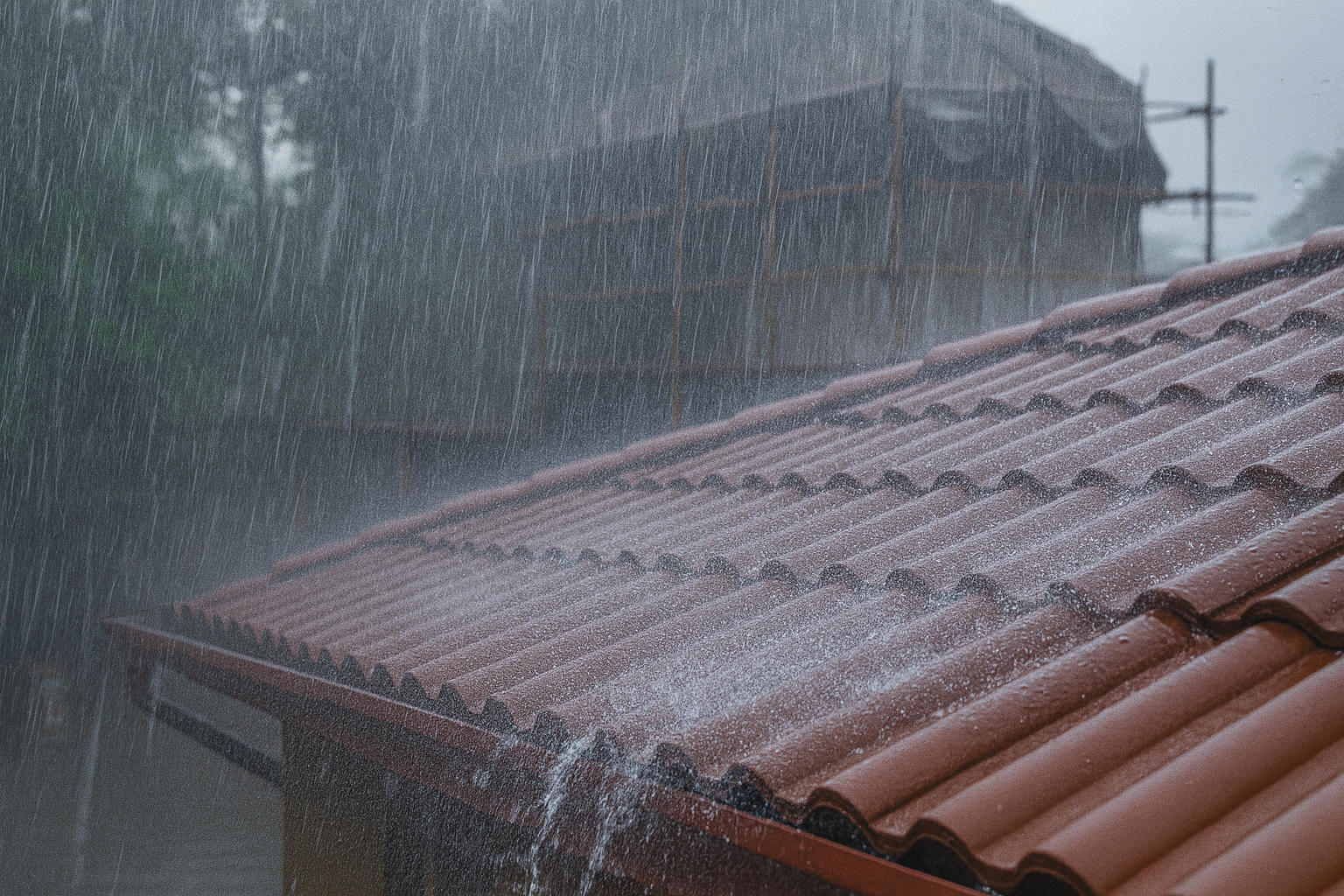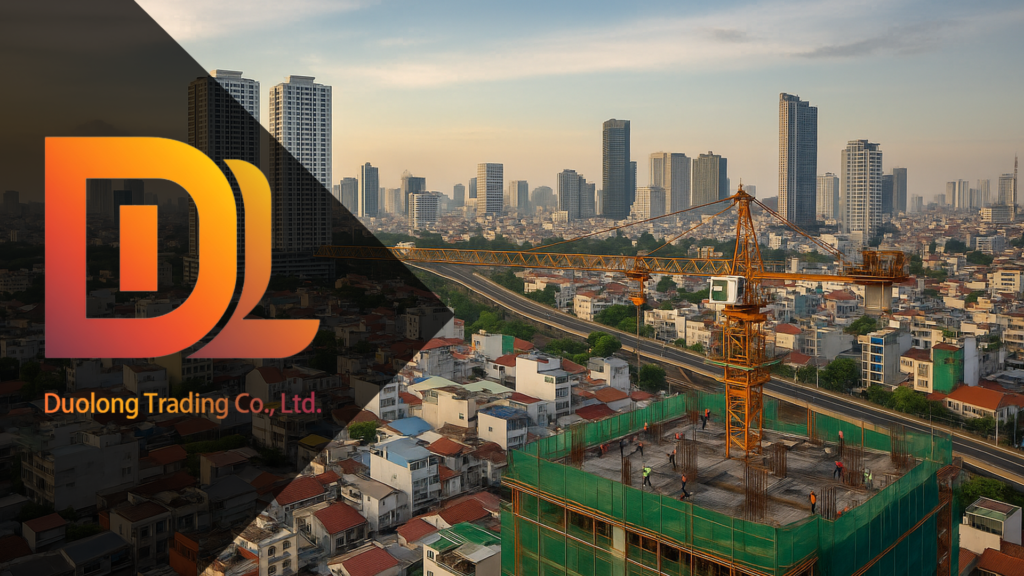Uncertainty Behind Price Fluctuations
The construction industry in Southeast Asia is expanding at a pace unmatched by most other regions in the world. From large-scale infrastructure initiatives such as Indonesia’s new capital project to rapid housing developments in Vietnam and the Philippines, demand for building materials continues to surge. Yet, alongside this growth comes a major challenge: the volatility of construction material prices.
For roofing materials in particular, fluctuations in raw material costs, logistics expenses, and government regulations have made pricing less predictable. Contractors face difficulties budgeting for long-term projects, wholesalers struggle to maintain stable margins, and developers are forced to adjust investment strategies based on shifting market conditions.
Understanding the key factors driving these price fluctuations is no longer optional—it is essential for business survival. This article explores the macroeconomic, supply chain, and market dynamics that shape material pricing in Southeast Asia. It also provides practical insights for wholesalers, contractors, and developers to manage risks and strengthen their competitive position in an increasingly uncertain environment.
Macroeconomic and Policy Environment
Roofing material prices in Southeast Asia are heavily influenced by broader macroeconomic trends and government policies. On the demand side, large-scale national projects and urbanization strategies are fueling consumption. For example, Indonesia’s relocation of its capital city has triggered an unprecedented demand for construction materials, while Vietnam’s affordable housing programs are pushing developers to secure cost-effective roofing solutions at scale. These policies create sudden spikes in demand, which often lead to short-term price surges.
Currency exchange rates also play a decisive role in shaping costs. Since a significant portion of roofing materials are imported from China, fluctuations in the Chinese yuan (CNY), U.S. dollar (USD), and local ASEAN currencies directly impact landed prices. A weakening local currency against the dollar or yuan can immediately raise import costs, reducing profit margins for wholesalers and contractors. Many forward-thinking businesses manage this risk by negotiating contracts in stable currencies or using financial hedging instruments.
In addition, regional trade agreements such as the ASEAN-China Free Trade Agreement (ACFTA) and the Regional Comprehensive Economic Partnership (RCEP) provide duty reductions for qualifying goods. Roofing materials that meet the rules of origin and are shipped with a Certificate of Origin (Form E) can often enjoy tariffs as low as 0–5%. This significantly improves cost competitiveness, particularly when compared to locally produced materials that may have higher raw material costs.
Overall, understanding the interplay between government infrastructure policies, currency dynamics, and trade agreements is essential for businesses operating in the roofing sector. Those who can anticipate policy shifts and manage currency exposure are far better positioned to stabilize costs and maintain a competitive edge in the Southeast Asian market.

Supply Chain and Raw Material Prices
One of the strongest drivers of roofing material price fluctuations in Southeast Asia is the cost of raw materials in global and Chinese markets. Roofing products such as ASA resin tiles, PVC roofing sheets, and FRP panels rely heavily on inputs like PVC resin, ASA polymers, fiberglass, and petrochemicals. Since many of these are derived from oil or natural gas, their prices are closely tied to global energy markets. For instance, a sudden spike in crude oil prices can quickly raise the cost of PVC and ASA resins, leading to higher finished product prices for importers.
China, as the largest supplier of roofing materials to ASEAN, also plays a decisive role. Rising labor costs, stricter environmental regulations, and higher electricity tariffs have pushed up production expenses for Chinese manufacturers. When these pressures combine with raw material volatility, Chinese exporters are often forced to adjust prices upward, which then directly impacts ASEAN buyers.
Logistics further magnify these fluctuations. International shipping costs—especially sea freight—have become highly unstable in recent years. During the COVID-19 pandemic, container shortages and port congestion caused freight rates to triple, sharply raising the landed cost of roofing materials. Even after recovery, issues such as the Red Sea shipping crisis or seasonal demand surges can create sudden cost escalations.
For wholesalers and contractors in Southeast Asia, these supply chain dynamics mean that roofing material prices can rise or fall within weeks. Successful businesses address this by diversifying suppliers, negotiating long-term pricing agreements, and strategically timing their purchases. By monitoring raw material trends and shipping costs, they can reduce exposure to sudden spikes and maintain more stable margins.
Market Demand and Seasonal Factors
Demand-side dynamics are another critical factor driving roofing material price fluctuations in Southeast Asia. Unlike developed markets with relatively stable demand, ASEAN countries experience sharp variations influenced by urbanization trends, government-backed projects, and seasonal weather conditions.
Rapid urbanization in Vietnam, the Philippines, and Indonesia is generating strong demand for affordable housing, commercial spaces, and infrastructure. This surge creates sudden procurement needs, especially when multiple developers or public projects are launched at the same time. In such cases, wholesalers and contractors often find themselves competing for the same roofing materials, which drives prices upward in the short term.
Seasonality also plays a major role. During the dry season, when construction activity peaks, demand for roofing products escalates. Conversely, in monsoon or typhoon seasons, construction slows down, creating temporary demand drops. However, extreme weather events often trigger a rebound: roofs damaged by storms or heavy rainfall require urgent repairs or replacement, creating a secondary wave of demand that can push prices back up.
Government infrastructure programs further amplify these cycles. When new public housing or transport projects are announced, demand surges quickly, compressing supply availability and raising prices across the region. These demand shocks are particularly challenging for wholesalers and contractors who lack forward planning or stable supplier agreements.
In short, Southeast Asia’s roofing market is highly sensitive to both seasonal patterns and policy-driven demand spikes. Businesses that anticipate these cycles—by building buffer inventories, diversifying supply chains, and aligning procurement with seasonal trends—are better equipped to stabilize costs and avoid being caught in price surges.

Competitive Landscape and Industry Structure
The pricing of roofing materials in Southeast Asia is also shaped by the region’s competitive dynamics. Unlike markets dominated by a few large producers, ASEAN countries feature a mix of local manufacturers, regional distributors, and heavy reliance on imports from China. This fragmented structure creates both opportunities and volatility.
Local production often focuses on traditional clay tiles, metal sheets, or lower-grade PVC products. While these materials can be produced at lower logistics costs, they may struggle with quality consistency, limited economies of scale, and weaker durability in harsh climates. Imported roofing products from China, such as ASA resin tiles and APVC sheets, are usually more competitive in terms of durability and certification standards. However, their pricing is sensitive to global shipping costs and trade conditions. The balance between these two supply sources often determines the direction of short-term price fluctuations.
Distribution structure adds another layer of complexity. In markets like Vietnam and Thailand, roofing materials are distributed through extensive networks of regional wholesalers. When distribution is fragmented, price competition intensifies, sometimes leading to aggressive discounting. In contrast, markets with more concentrated distribution, such as Singapore, see more stable pricing but higher margins. Contractors and developers must understand these structural differences when planning procurement strategies.
The emergence of alternative materials is another factor influencing prices. New lightweight, eco-friendly solutions such as composite panels or energy-saving tiles are gaining traction, especially among projects targeting green building certifications. As adoption grows, these products put downward pressure on traditional materials by introducing new benchmarks for performance and price.
In sum, the competitive structure of Southeast Asia’s roofing market creates a dynamic environment where both traditional and modern materials coexist. Businesses that can navigate the balance between local sourcing and imports, while also staying aware of emerging alternatives, are best positioned to manage costs effectively and maintain competitiveness.
Financial and Investment Environment
Beyond supply and demand, the financial and investment environment also plays a significant role in shaping roofing material prices in Southeast Asia. Construction projects require large amounts of capital, and shifts in global and local financing conditions directly affect both demand and pricing.
One key factor is the inflow of international capital into Southeast Asia’s property and infrastructure markets. Global investors, development banks, and sovereign funds have been pouring money into projects across Vietnam, Indonesia, and the Philippines. This influx of capital stimulates demand for construction materials, often creating sudden spikes in orders for roofing products. When financing is abundant, developers accelerate project timelines, leading to upward pressure on prices. Conversely, when investment slows, demand can weaken sharply, resulting in temporary price stability or even declines.
Interest rates and credit policies also have a clear impact. Rising interest rates increase borrowing costs for developers, reducing their ability to launch new projects and thereby lowering short-term demand for building materials. On the other hand, favorable loan policies or government-backed financing schemes can revive construction activity, boosting material consumption and raising prices.
Another emerging influence is ESG (Environmental, Social, and Governance) investment standards. International investors increasingly require projects to adopt sustainable building practices, which creates a preference for certified eco-friendly materials. Roofing materials such as ASA resin tiles or energy-efficient panels often enjoy higher demand under these frameworks. While this can create upward price pressure in the short term, it also adds long-term value by aligning projects with global sustainability trends and unlocking new sources of funding.
In summary, the financial environment functions as a multiplier for construction demand and material pricing. Developers and wholesalers that closely monitor capital flows, interest rate trends, and ESG investment requirements are better positioned to anticipate demand shifts and manage procurement costs.
External Risks and Unexpected Events
Even with careful planning, external risks and unexpected events often create sudden and dramatic price swings in Southeast Asia’s roofing material market. These shocks usually originate outside the control of local buyers and suppliers, yet their impact can be severe.
Energy crises are one major driver. Since most roofing materials—such as ASA resin tiles, PVC sheets, and metal components—depend on petrochemical inputs or energy-intensive production, spikes in global oil and gas prices quickly raise manufacturing and shipping costs. For example, the energy crunch in 2022 caused PVC resin prices to climb sharply, leading to a ripple effect on roofing material imports across the region.
Geopolitical tensions and conflicts also disrupt supply chains. Events such as trade restrictions, sanctions, or disruptions along major shipping routes (e.g., the Red Sea crisis) can delay shipments and inflate freight costs. For ASEAN buyers who rely heavily on Chinese suppliers, these geopolitical shocks directly increase landed costs and create uncertainty around delivery schedules.
Extreme weather adds another layer of volatility. Typhoons, floods, and prolonged rainy seasons not only increase demand for roofing replacements but also disrupt local logistics and port operations. These dual effects—higher demand and slower supply—can create sudden price surges.
Finally, health crises such as COVID-19 highlight how fragile global supply chains can be. During the pandemic, container shortages, factory shutdowns, and border restrictions caused unprecedented spikes in shipping costs and delayed projects across ASEAN. Many businesses that relied on “just-in-time” procurement strategies suffered significant losses.
In short, external risks—from energy markets to geopolitics and climate—will continue to shape the pricing landscape. Buyers who diversify suppliers, maintain buffer stocks, and build long-term partnerships with reliable manufacturers are more resilient to these shocks and better equipped to protect their margins.

Conclusion and Risk Management Recommendations
Price fluctuations in Southeast Asia’s roofing material market are not the result of a single factor but rather the combined effect of macroeconomic conditions, raw material costs, seasonal demand cycles, competition, financial environments, and external shocks. For businesses operating in this dynamic landscape, volatility is not just a challenge—it is a reality they must prepare for.
For wholesalers, the lesson is clear: building flexibility into procurement is essential. This means diversifying suppliers across multiple regions, negotiating long-term contracts to lock in prices where possible, and maintaining safety stock to buffer against unexpected demand surges.
For contractors, the focus should be on aligning procurement with project timelines. By planning ahead and purchasing materials before peak seasons or major policy-driven demand spikes, they can avoid inflated costs. Strong relationships with trusted suppliers can also ensure priority access to materials during supply shortages.
For developers, understanding financial trends and capital flows is critical. Monitoring interest rates, currency shifts, and ESG requirements helps them anticipate when costs may rise or fall, enabling more accurate budgeting and investment planning. Partnering with suppliers who can provide not only products but also technical and financial guidance strengthens their ability to navigate uncertain markets.
Ultimately, price volatility will remain a feature of the ASEAN roofing material market. But businesses that adopt proactive risk management strategies—combining market insight with operational discipline—can turn uncertainty into opportunity. By anticipating fluctuations and planning accordingly, they will not only protect margins but also position themselves as reliable, forward-looking players in a highly competitive industry.


